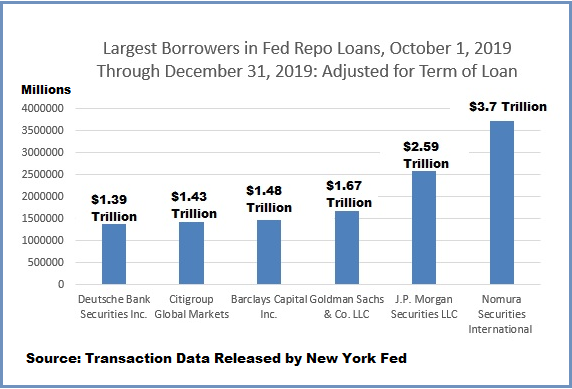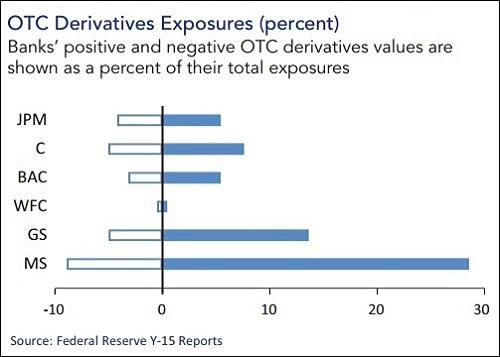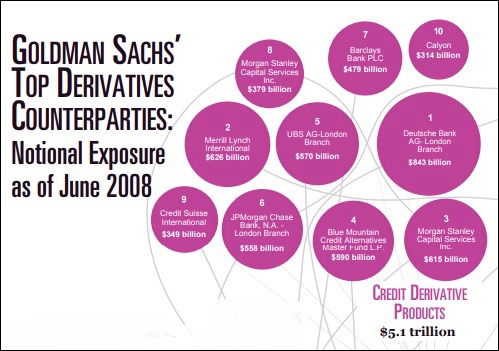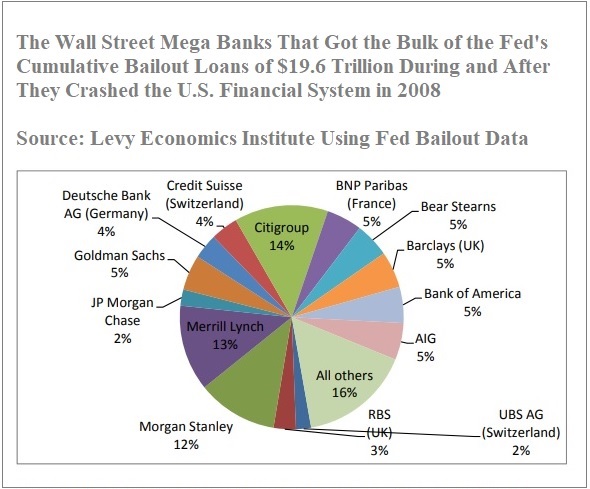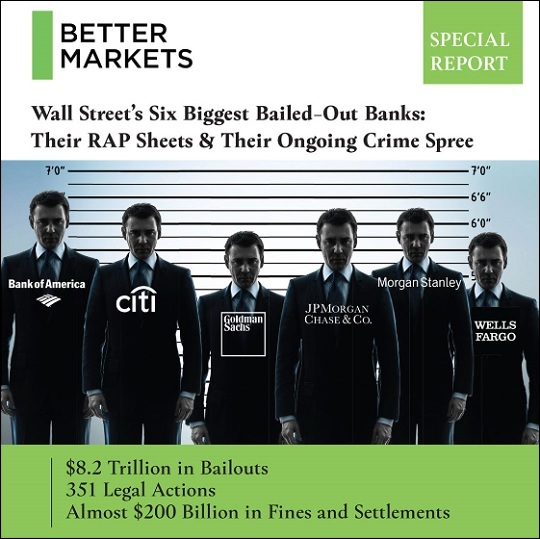By Pam Martens and Russ Martens: August 15, 2023 ~
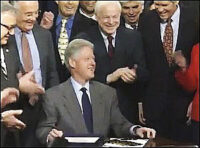
President Bill Clinton Laughs It Up as He Signs the Repeal of the Glass-Steagall Act, November 12, 1999
The Bill Clinton administration’s repeal in 1999 of the 1933 Banking Act, commonly known as the Glass-Steagall Act, ushered in the greatest kleptocracy America has ever known. The Cambridge dictionary defines “kleptocracy” as: “a society whose leaders make themselves rich and powerful by stealing from the rest of the people.” In fact, the actual goal of repealing Glass-Steagall was to do just that.
The momentum for the repeal of Glass-Steagall came from the announcement in 1998 that Wall Street veteran, Sandy Weill, wanted to merge his trading firms, Salomon Brothers and Smith Barney (under the Travelers Group umbrella), with Citicorp, parent of the federally-insured Citibank commercial bank. Because of the Glass-Steagall Act, such a merger was illegal at the time.
The 1933 Congress that passed the Glass-Steagall Act had watched the stock market lose 89 percent of its value over the years following the 1929 stock crash. It had seen thousands of banks collapse and the onset of the Great Depression — all because of the Wall Street kleptocracy of that time.
To restore the public’s trust in banks, the Glass-Steagall Act did two simultaneous things: it created federally-insured deposits at commercial banks and it barred those banks from combining with their casino brethren on Wall Street – the brokerage firms and investment banks.
Weill had a self-confessed personal motive for the merger he proposed in 1998, which created the so-called “universal bank,” Citigroup. Weill told his merger partner, John Reed of Citibank, that his motivation for the deal was: “We could be so rich,” according to Reed in an interview with Bill Moyers.
The budding kleptocracy in 1998 didn’t waste any time in putting the plan into motion and reaping the windfall financial rewards. Clinton’s Treasury Secretary, Robert Rubin, who pushed for the repeal of Glass-Steagall, went directly from the Treasury Department to take a seat on Citigroup’s Board, where he was lavishly compensated to the tune of $120 million over the next decade. (The Financial Crisis Inquiry Commission, that was created after these Wall Street “universal banks” blew up the U.S. financial system in 2008, made a criminal referral of Rubin to the U.S. Department of Justice, asking that Rubin’s conduct at Citigroup be investigated. Nothing more came of it. The Wall Street kleptocracy has ruled the U.S. Department of Justice since the repeal of Glass-Steagall. Instead of indicting mega bank executives, the Justice Department now hands out non-prosecution and deferred-prosecution agreements to the banks — and winks at the bank as it violates each probation agreement.)
Weill made out much better than Rubin. Weill walked away from Citigroup as a billionaire, just a few years before it collapsed.
Weill’s billionaire status grew out of what corporate compensation expert Graef “Bud” Crystal called the Count Dracula stock option plan – you simply could not kill it. Nor could you prosecute it because Citigroup’s Board of Directors rubber-stamped it.
Weill’s stock option plan worked like this: every time he exercised one set of stock options, he got a reload of approximately the same amount of options, regardless of how many frauds the bank had been charged with during the year.
When Weill stepped down as CEO in 2003, he had amassed over $1 billion in compensation, the bulk of it coming from his reloading stock options. (He remained as Chairman of Citigroup until 2006.) Just one day after stepping down as CEO, Citigroup’s Board of Directors allowed Weill to sell back to the corporation 5.6 million shares of his stock for $264 million. Weill’s shares were sold on October 2, 2003 at a price of $47.14 per share. Less than six years later, Citigroup was a 99-cent stock.
A Government Accountability Office (GAO) audit revealed in 2011 that the Federal Reserve had secretly pumped $16 trillion in cumulative loans at almost zero interest rates to Wall Street banks and trading houses from December 2007 to July 2010. Citigroup was the largest recipient of the Fed loans, receiving $2.5 trillion in cumulative loans from late 2007 to the middle of 2010. In addition, Citigroup received $45 billion in capital injections from the U.S. Treasury; the Federal government guaranteed over $300 billion of Citigroup’s assets; the Federal Deposit Insurance Corporation (FDIC) guaranteed $5.75 billion of its senior unsecured debt and $26 billion of its commercial paper and interbank deposits.
Weill walks away a billionaire and the tab to the taxpayer is in the trillions of dollars. This is the quintessential definition of kleptocracy.
For more than a decade, Wall Street On Parade has reported on how this revitalized kleptocracy has plundered wealth from the little guy into the pockets of the 1 percent while simultaneously creating a no-law zone around itself with private justice systems, captured regulators, corrupted courts and a Congress that now marches to the beat of corporate campaign money instead of to the will of the people.
Americans no longer recognize their “democracy” because its soul has been crushed by the kleptocrats.
Sometimes a picture is worth a thousand words. Thus, today we offer, in charts, a few of the milestones delivered to us by the Wall Street kleptocracy since the repeal of the Glass-Steagall Act.

Where a Large Part of AIG’s Government Bailout Money Went in 2008. Figures are in Billions. (Source: Congressional Oversight Panel)
2016 Office of Financial Research Data Shows Derivative Exposures as Percent of Total Exposures: Symbols: JPM= JPMorgan; C=Citigroup; BAC=Bank of America; WFC=Wells Fargo; GS=Goldman Sachs; MS=Morgan Stanley
Source: Financial Crisis Inquiry Commission

